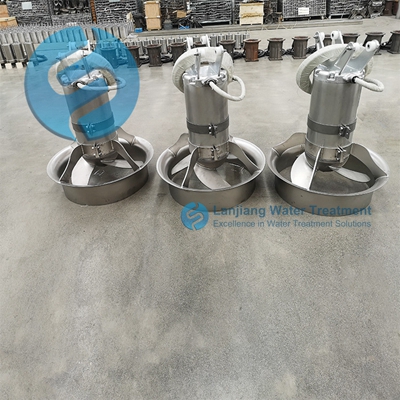Sewage treatment equipment can be roughly divided into the following categories according to its treatment methods and application scenarios:

First, classification by processing stage
1. Sewage pretreatment equipment:
- Fouling equipment: mainly grilles, used to intercept large suspended and floating objects in sewage to prevent them from entering the subsequent treatment process. The selection of grid type should consider the specific requirements and placement of the sewage treatment plant, such as grid bar spacing, grid bar cross-section shape, installation Angle, etc.
- Sand settling equipment: such as aerated sand settling tank, Dore sand settling tank, etc., used to remove sand and inorganic particles in sewage, reduce the load of subsequent treatment equipment.
- Sand removal equipment: divided into gravity and mechanical sand removal, used to discharge the sand deposited in the sand removal equipment.
- Sedimentation equipment: such as sedimentation tank, through the action of gravity to make the suspended matter in the sewage naturally sink, to achieve the purpose of solid-liquid separation. There are many types of sedimentation tank, such as flat flow, vertical flow and radial flow.
- Air flotation equipment: the use of small bubbles or tiny bubbles to make the impurities in the medium surface, suitable for removing the fine impurities in the water body whose specific gravity is close to that of water.
2. Sewage biological treatment equipment:
- Blast aeration equipment: provides sufficient oxygen for the biological treatment process and promotes the growth and metabolic activities of microorganisms.
- Biofilm wastewater treatment equipment: such as biological fluidized bed, the use of biofilm attached to the carrier to remove organic matter in sewage.
Anaerobic wastewater treatment equipment: such as upflow anaerobic sludge bed (UASB), which uses anaerobic microorganisms to degrade organic matter under anaerobic or low oxygen conditions.
- Decanter: used to drain the treated supernatant from the biological treatment tank.
3. Sludge treatment equipment:
- Sludge discharge equipment: such as mud scraper, suction scraper, etc., used to discharge sludge from the sedimentation tank or biological treatment tank.
Sludge thickening equipment: such as gravity thickening tank, air flotation thickening equipment, etc., used to reduce the volume and moisture content of sludge.
- Sludge anaerobic digestion equipment: through the action of anaerobic microorganisms to further stabilize the sludge and produce biogas.
Sludge dewatering and drying equipment: such as vacuum filtration equipment, press filtration dewatering equipment, rotary butterfly sludge dewatering machine, etc., for further removing water in the sludge, so that it is easy to transport and dispose of the state.
Second, according to the processing method classification
1. Mechanical treatment equipment: removal of suspended matter and impurities in sewage by physical means such as precipitation, filtration, separation, etc. Common equipment includes grids, settling tanks, filters, etc.
2. Biochemical treatment equipment: The use of microbial metabolism to transform organic matter in sewage into harmless substances. Common equipment includes activated sludge reactor, biofilm reactor and so on.
3. Chemical treatment equipment: removal of harmful substances in sewage through chemical reactions such as oxidation, reduction, precipitation, etc. Common equipment includes oxidation tank, electrolyzer, neutralization tank and so on.
4. Advanced treatment equipment: Further treatment of mechanical, biochemical or chemical treated sewage to achieve higher water quality indicators. Common equipment includes activated carbon adsorbers, disinfection equipment, etc.
Third, other general and auxiliary equipment
- All kinds of pumps: such as sewage pumps, sludge pumps, metering pumps, etc., used to transport sewage and sludge.
- Valves: such as gate valves, globe valves, butterfly valves, etc., are used to control the fluid flow in the pipeline.
- Fan: Provides air power for processes such as aeration.
- Compressor: Used to produce compressed air or gas.
- Electrical equipment: such as motors, starting switchgear, lighting equipment, lightning protection equipment, power distribution equipment, etc., to provide power support and security for the sewage treatment system.
- Instruments and meters: such as electromagnetic flowmeters, ultrasonic flowmeters, dissolved oxygen meters, pH meters, etc., used to monitor and control the parameters in the sewage treatment process.
To sum up, there are many kinds of sewage treatment equipment, and all kinds of equipment play different roles in the sewage treatment process. In practical applications, it is necessary to choose the appropriate equipment combination and treatment process according to the nature of sewage, treatment requirements and treatment scale.
Post time:2024-07-12